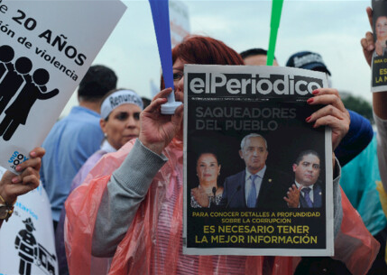
Civil war is among the most destructive forces in the modern world. Its toll is felt in the innumerable human lives lost, the infrastructure and economic assets decimated, the social services like healthcare and education set back decades, and the communities fragmented and traumatized in its wake.
Yet, amid the overwhelming devastation, we can also find sources of innovation and generation within armed conflict. Civil wars produce new social and political identities that crystallize through the hardening of wartime rivalries and processes of wartime mobilization. They breed new organizations—whether insurgent, paramilitary, or civilian—to wage or resist violence. And they foster new rules and procedures within state structures in an effort to eradicate an internal enemy.
This latter phenomenon—wartime institutional transformations within the counterinsurgent state—is the central focus on my new book, Undermining the State from Within: The Institutional Legacies of Civil War in Central America. Undermining the State from Within illuminates how state and military leaders, in the course of counterinsurgent warfare, fashion institutional innovations to accumulate resources, legitimize and execute targeted killings, and preserve their political power. While benefitting a small circle of political and military elites, these wartime institutional transformations, which often breed corrupt, predatory practices, also serve to undermine the state’s ability to perform key functions like tax collection, public security provision, and the regulation of property ownership, distorting political and economic development long after the fighting has ceased.
The book draws on unique archival documentation and interviews with former political and military officials, bureaucrats, prosecutors, and business leaders from two Central American countries, Guatemala and Nicaragua, to elaborate what this process of wartime institutional innovation looks like, as well as its longer-term consequences. Both Guatemala and Nicaragua were home to bloody Cold War-era civil wars; however, the conflicts differed quite significantly when it comes to the nature of the counterinsurgent regime and foreign support. While Guatemala’s civil war was prosecuted by a right-wing military dictatorship aided by the United States government, Nicaragua’s Contra war was waged by a leftist revolutionary regime fighting US-backed rebel forces.
But despite these differences, counterinsurgency in both cases bred what I term “undermining rules”—institutional arrangements that subvert core state functions—within distinct policy domains. In the Guatemalan tax administration, military intelligence officers seized control over the customs apparatus under the pretext of preventing the flow of weapons and other resources to guerrilla forces. Yet, in doing so, they also institutionalized new forms of fraud to siphon off customs revenues, depriving the Guatemalan state of hundreds of millions of dollars over two decades. Within Guatemala’s police forces, specialized units under military control established well-known procedures for monitoring and extrajudicially executing suspected “subversives” and “delinquents,” undermining state security provision. And in Nicaragua, rulers established new procedures to accelerate land redistribution while cementing peasant allegiances—procedures that involved providing temporary legal titles which ultimately generated insecurity, conflict, and corruption when it came to land and property administration.
Importantly, in shedding light on these wartime institutional distortions, Undermining the State from Within does not just push us to rethink Central America’s Cold War-era past. It also informs how we conceive of the region’s political, social, and economic woes today. Even with the transitions from authoritarian rule and peace processes that swept Central America in the 1980s and 1990s, the region remains wracked by socioeconomic inequality, criminal violence, corruption, impunity, and weak public goods provision—all factors seen as driving people from El Salvador, Guatemala, Honduras, and, increasingly, Nicaragua to flee their home countries for the United States’ southern border. Indeed, while the region has not witnessed a return to political violence on the scale of that experienced in the 1980s, there is little doubt that the promises of peace and democratic transition remain largely unfulfilled.
Undermining the State from Within helps us make sense this contemporary reality by illuminating how conflict-era institutional transformations hard-wired within Central American states perverse and predatory practices, which, on the one hand, benefit political, economic, and criminal elites, but, on the other hand, subvert the state’s ability to perform critical functions like the collection of tax revenue, the provision of citizen security, and the administration of goods and services. Though policymakers and analysts have frequently attributed Central America’s dire conditions to the weakness and, in some cases, absence of the state, my book rethinks this conventional understanding. Instead, I argue, what looks like state weakness and absence, is instead the power and presence of alternative institutional logics that serve elite interests—institutional logics bred in the shadows of counterinsurgency.
Latest Comments
Have your say!